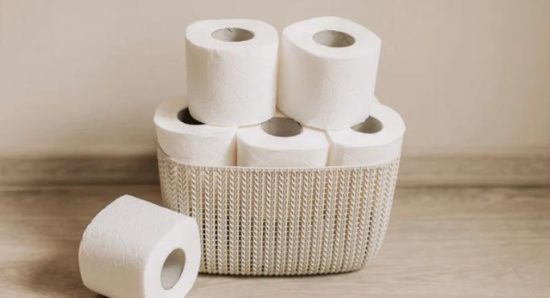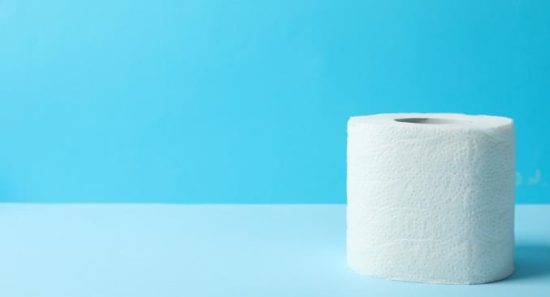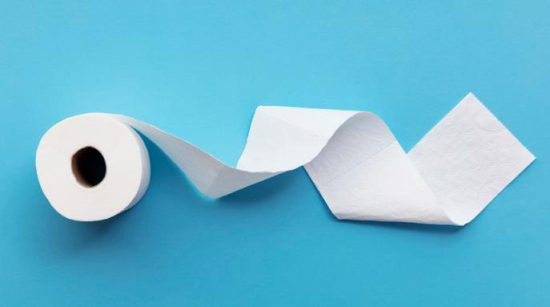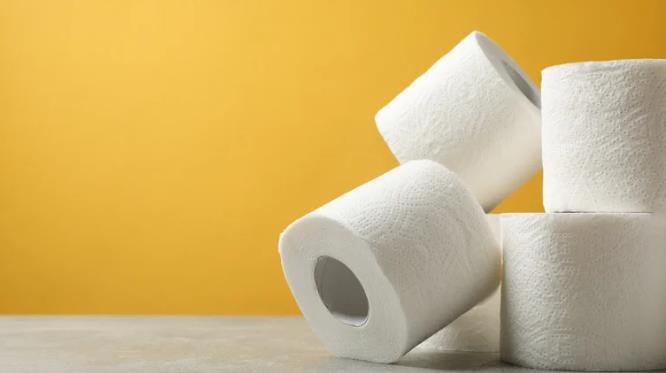Certain events in humanity’s vast history stick out as critical turning points that influenced how we think, live, and relate to the world. Toilet paper is one such easily overlooked yet crucial invention. Its introduction indicated a change in comfort and hygiene habits that would last centuries. Let’s explore the fascinating history of when was toilet paper invented and the significance of this essential product.
The History Before Toilet Paper

Before the advent of toilet paper, humans used numerous methods to cleanse themselves after using the restroom. Ancient civilizations depended on various substances like stones, leaves, and corncobs for wool, water, or even one’s hand. These methods are suitable, but toilet paper is more efficient. In the absence of hygiene products, individuals are forced to find something comfortable and hygienic. Otherwise, it causes several sicknesses and health risks.
Who Invented Toilet Paper?
The credit for inventing current toilet paper as we know it today is frequently attributed to Joseph Gayetty, an American entrepreneur. In 1857, Gayetty introduced the primary commercial toilet paper as “Gayetty’s Medicated Paper.” Each sheet was embossed with his name and advertised as a remedy for diverse illnesses, including a touch of luxury to personal hygiene. Gayetty’s invention provided a more practical and hygienic substitute for traditional cleaning techniques, paving the way for further advancements in sanitation.
However, Gayetty’s discovery opened the way for the development of modern restroom paper, and subsequent advancements and mass production techniques led to its wide adoption. The transformation of toilet paper from a disposable item to a necessary household item shows individuals’ inventiveness and enterprising nature throughout history. Restroom paper is still essential today, demonstrating its lasting history and impact on daily life.
When Was Toilet Paper Invented?
Although Gayetty’s invention was a significant turning point in the development of toilet paper, the general public only had easy access to mass-produced toilet paper in the late 1800s. Perforated toilet paper on a roll was first proposed by the Scott Paper Company in 1890, completely changing how people could obtain and utilize this necessary item. Roll-based toilet paper was introduced, simplifying production processes and increasing environmental sustainability in distribution, making it widely available to families worldwide.

Roll-based toilet paper’s comfort and low cost led to its quick uptake and eventual replacement of traditional options in the market. Toilet paper’s position in modern hygiene habits became even more vital when manufacturers created new materials and technologies to improve the product’s comfort and quality in response to growing consumer demand.
Who Uses Toilet Paper?
The adoption of toilet paper transcended geographical and cultural boundaries, becoming ubiquitous in households worldwide. Its convenience, disposability, and hygienic properties made it a staple in modern sanitation practices. From bustling cities to remote villages, toilet paper remains a universal necessity, bridging gaps and ensuring a basic standard of cleanliness for billions of people. While toilet paper usage may vary across cultures and regions, its fundamental role in personal hygiene remains constant. The widespread availability of toilet paper reflects advancements in manufacturing, distribution, and sanitation infrastructure, enabling individuals from all walks of life to access this essential commodity.
Usage of Toilet Paper
The use of toilet paper in households worldwide crosses national and cultural boundaries. It became a mainstay in modern sanitation procedures due to its ease of use, disposability, and clean housing. Restroom paper continues to be an essential commodity, bridging gaps and ensuring a basic level of hygiene for billions of people, whether in busy cities or remote villages. Following toilet usage, restroom paper is the most popular method of personal hygiene in urban facilities across North America, Europe, Asia, and Australia. Supermarkets, convenience stores, and online platforms all stock it, demonstrating how widely used and accessible it is.

In this regard, due to factors including cultural customs, financial limitations, and inadequate infrastructure, traditional methods involving water, leaves, or community clothes are still used daily in many countries in Africa, South America, and Asia. Even though urban areas supply toilet paper, rural communities could still depend on conventional sanitation practices. The use of toilet paper differs throughout countries and continents, driven by differences in economic development, access to resources, and cultural standards. Some communities have adopted modern sanitation measures, but others continue to rely on age-old methods passed down through the years.
What did people use before toilet paper was invented?
Before the invention of modern toilet paper, people used a wide range of materials for personal hygiene after using the restroom. In rural areas, leaves, grass, or plant materials were commonly used. In some cultures, people used materials like corn cobs, stones, or shells.
In more developed civilizations like ancient Rome, they used a sponge attached to a stick, which was dipped in water and then used to clean themselves. The sponge would be rinsed and reused, although in communal bathrooms, they might not always be thoroughly cleaned between uses.
Choosing the Best Toilet Papers
Think about Strength, Texture, and Ply
While choosing the best toilet paper consider the number of plys; a higher number indicates softer and more absorbent toilet paper. Charmin Ultra Soft is famous for its plush texture and superior absorbency.
Give it a test to ensure the texture feels soft and pleasant on the skin. Quilted Northern’s silky texture makes cleaning it a gentle pleasure.
Check the toilet paper’s strength to ensure it won’t break or crumble while being used. Cottonelle Ultra CleanCare is well known for being rip- and tear-resistant.
Give ethical sourcing and sustainability top priority
Seek out goods manufactured from recycled materials or obtained from responsibly managed forests. Seventh Generation provides toilet paper made entirely of recycled paper to encourage resource conservation.
Select companies that uphold fair compensation for workers across the supply chain and prioritize ethical labor practices. Who Gives A Crap is dedicated to fair trade principles and contributes a portion of its earnings to global sanitation initiatives.
Think of environmentally friendly solutions that reduce their impact, like toilet paper that decomposes or biodegrades. Bamboo is a renewable resource that proliferates without fertilizer or pesticides. Bambooee makes toilet paper from bamboo.
Consider Packaging and Production Processes

Choose toilet paper packaged in recyclable or biodegradable materials to cut down on waste. Tushy reduces its environmental impact by providing toilet paper in packaging that can be composted.
Look at companies that use environmentally friendly production practices, like water- or energy-saving measures. Reel Paper lessens its influence on the environment by using sustainable production practices and offsetting its carbon footprint.
Products that add to environmental pollution, such as those with excessive packaging or non-recyclable components, should be avoided. Marcal Small Steps reduces waste and promotes sustainability by offering toilet paper in simple, environmentally friendly packaging.
Look for Certifications and Endorsements
To ensure sustainable forestry methods, look for toilet paper accredited by respected groups such as the Rainforest Alliance or the Forest Stewardship Council (FSC). Scott Naturals is an FSC-certified company, so its paper products are guaranteed to originate from ethically managed forests.
Think about goods certified environmentally benign by eco-labels or supported by environmental organizations. Green Seal, the leading environmental certification body, supports EcoSoft because of its dedication to eco-friendly and sustainable operations.
Top Five Toilet Papers to Consider in 2024
Here are the top five toilet papers to consider in 2024, focusing on their strengths, softness, and environmental friendliness:
- Cottonelle Ultra ComfortCare Toilet Paper – Known for its strength and absorbency, this two-ply toilet paper features a rippled texture to enhance cleaning effectiveness. It is praised for being both soft and durable.
- Charmin Ultra Soft Toilet Paper – This two-ply toilet paper stands out for its exceptional softness and plush quality, making it very comfortable. However, it may not dissolve as easily, which could be a concern for those with sensitive plumbing.
- Quilted Northern Ultra Plush Toilet Paper – A three-ply option that provides a luxurious and absorbent experience. It is very strong, especially when wet, but might not be ideal for homes with problematic plumbing due to its plushness.
- Scott 1000 Sheets Per Roll Toilet Paper – Valued for its efficiency and economy, this one-ply toilet paper offers a high count of sheets per roll, which lasts longer and is cost-effective. It is also favored for its fast dissolving properties, suitable for homes with sensitive septic systems.
- Betterway Bamboo Toilet Paper – An eco-friendly choice, this three-ply bamboo toilet paper is hypoallergenic and comes in plastic-free packaging. It appeals to environmentally conscious users, though it may be a bit pricier compared to traditional types.
These toilet papers vary in features and are suitable for different preferences and household needs, such as comfort, environmental impact, or budget considerations.
Conclusion
In conclusion, while the development of toilet paper may seem like a minor historical footnote, its influence on modern living is immense. From its modest beginnings to its widespread use, toilet paper represents the development of hygienic habits and social standards. As we consider this historic turning point, let us acknowledge the comfort, convenience, and invention that toilet paper has brought to countless lives.
FAQs on toilet paper
1. Are there alternatives to traditional toilet paper?
Yes, there are alternative options such as bidets, wet wipes, and eco-friendly toilet paper made from recycled materials or sustainable sources. Additionally, some cultures continue to use traditional methods like water or leaves for personal hygiene.
2. Who invented modern toilet paper?
Joseph Gayetty, an American entrepreneur, is often credited with inventing modern toilet paper. He introduced “Gayetty’s Medicated Paper” in 1857, marketed as a remedy for various ailments.
3. When did toilet paper become widely available?
Toilet paper became widely available in the late 19th century with the introduction of roll-based toilet paper by the Scott Paper Company in 1890.
4. How has toilet paper usage evolved over time?
Toilet paper usage has evolved from improvised methods to mass-produced, readily available products. Advances in manufacturing and distribution have made toilet paper a staple in modern sanitation practices worldwide.

